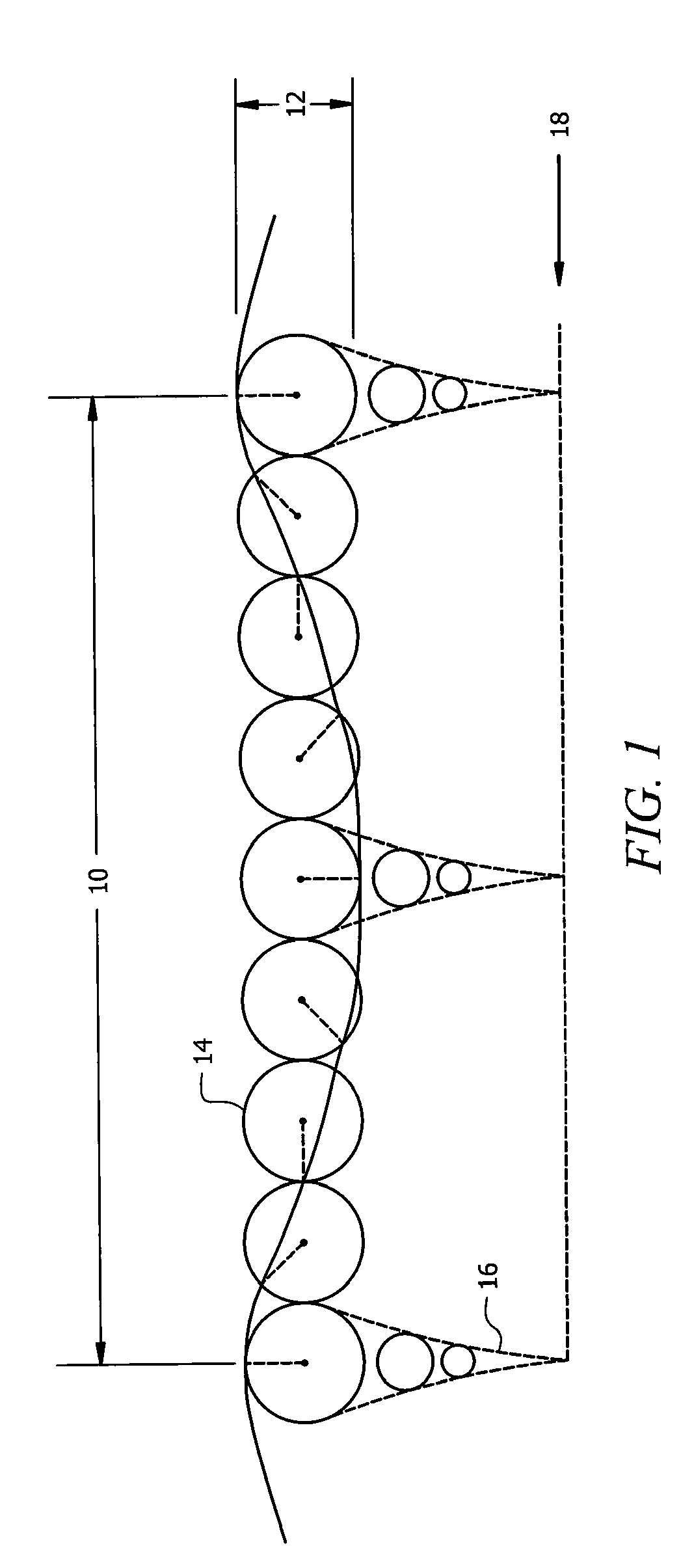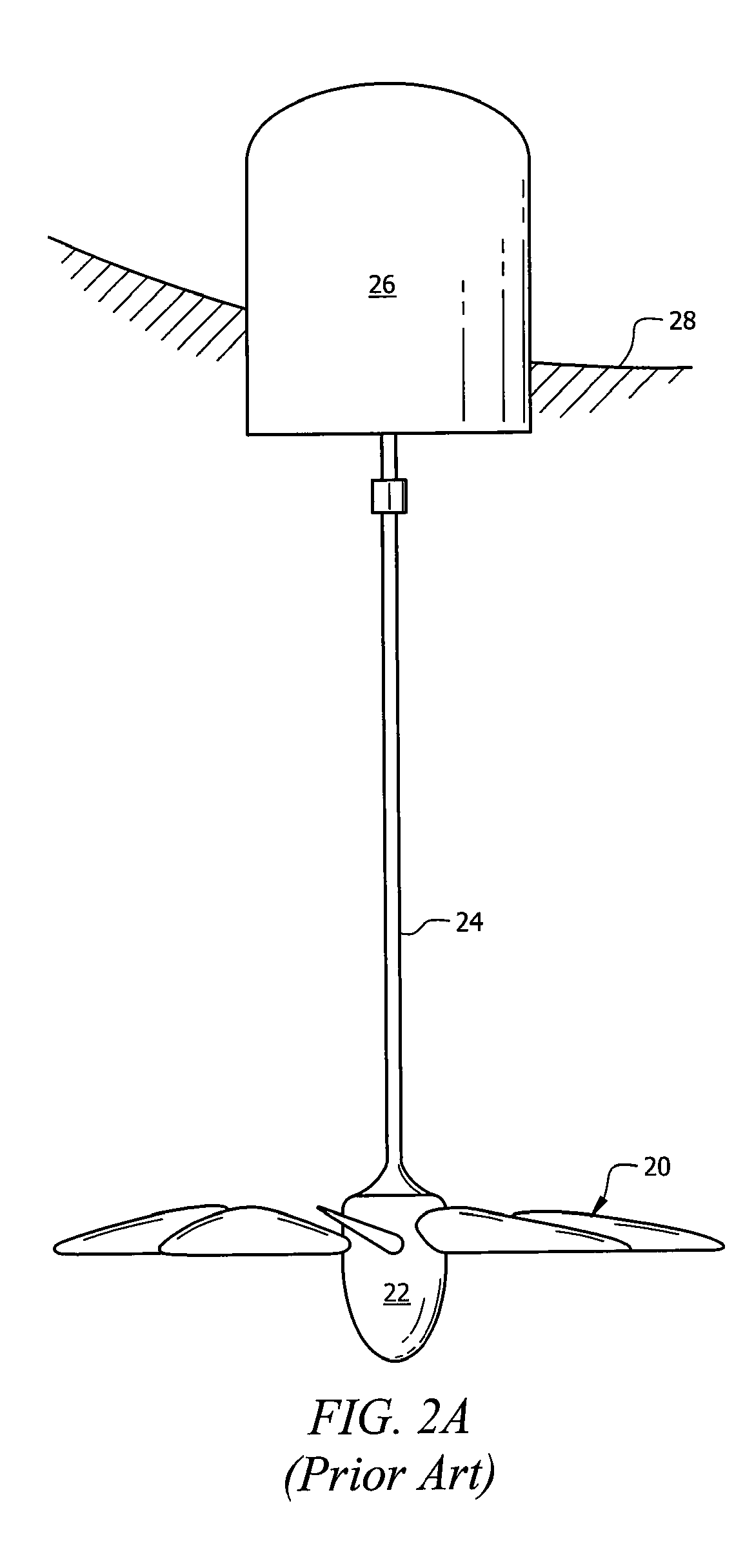Venturi pinwheel and sea anchor wave energy conversion systems
a technology of wave energy conversion and pinwheel, which is applied in the direction of sea energy generation, machines/engines, mechanical equipment, etc., can solve the problems of low efficiency of water movement, and low efficiency of devices, so as to reduce the world's reliance on fossil fuels, high efficiency, and low maintenance
- Summary
- Abstract
- Description
- Claims
- Application Information
AI Technical Summary
Benefits of technology
Problems solved by technology
Method used
Image
Examples
Embodiment Construction
[0087]FIG. 1 illustrates properties of deep-water swells that are particularly relevant to the invention disclosed herein. The wavelength 10 of a deep-water wave is the distance over which the waveform repeats itself, i.e., from wave crest to wave crest. The height to which the wave crest is raised above the corresponding wave troughs is the wave height or amplitude and is denoted 12.
[0088]Water molecules and other particles contributing to the propagation of deep-water waves have circular, as distinguished from elliptical, orbits 14. The radii of such orbits decrease exponentially with increasing depth as indicated by the reference numeral 16. The radii become vanishingly small as the depth approaches one-half the wavelength of the waves. This special depth is called the wave base 18. A deep-water wave does not move the water located below the wave base to any significant degree. The water below this depth, and any objects floating in it are substantially stationary even when waves...
PUM
 Login to View More
Login to View More Abstract
Description
Claims
Application Information
 Login to View More
Login to View More - R&D
- Intellectual Property
- Life Sciences
- Materials
- Tech Scout
- Unparalleled Data Quality
- Higher Quality Content
- 60% Fewer Hallucinations
Browse by: Latest US Patents, China's latest patents, Technical Efficacy Thesaurus, Application Domain, Technology Topic, Popular Technical Reports.
© 2025 PatSnap. All rights reserved.Legal|Privacy policy|Modern Slavery Act Transparency Statement|Sitemap|About US| Contact US: help@patsnap.com



